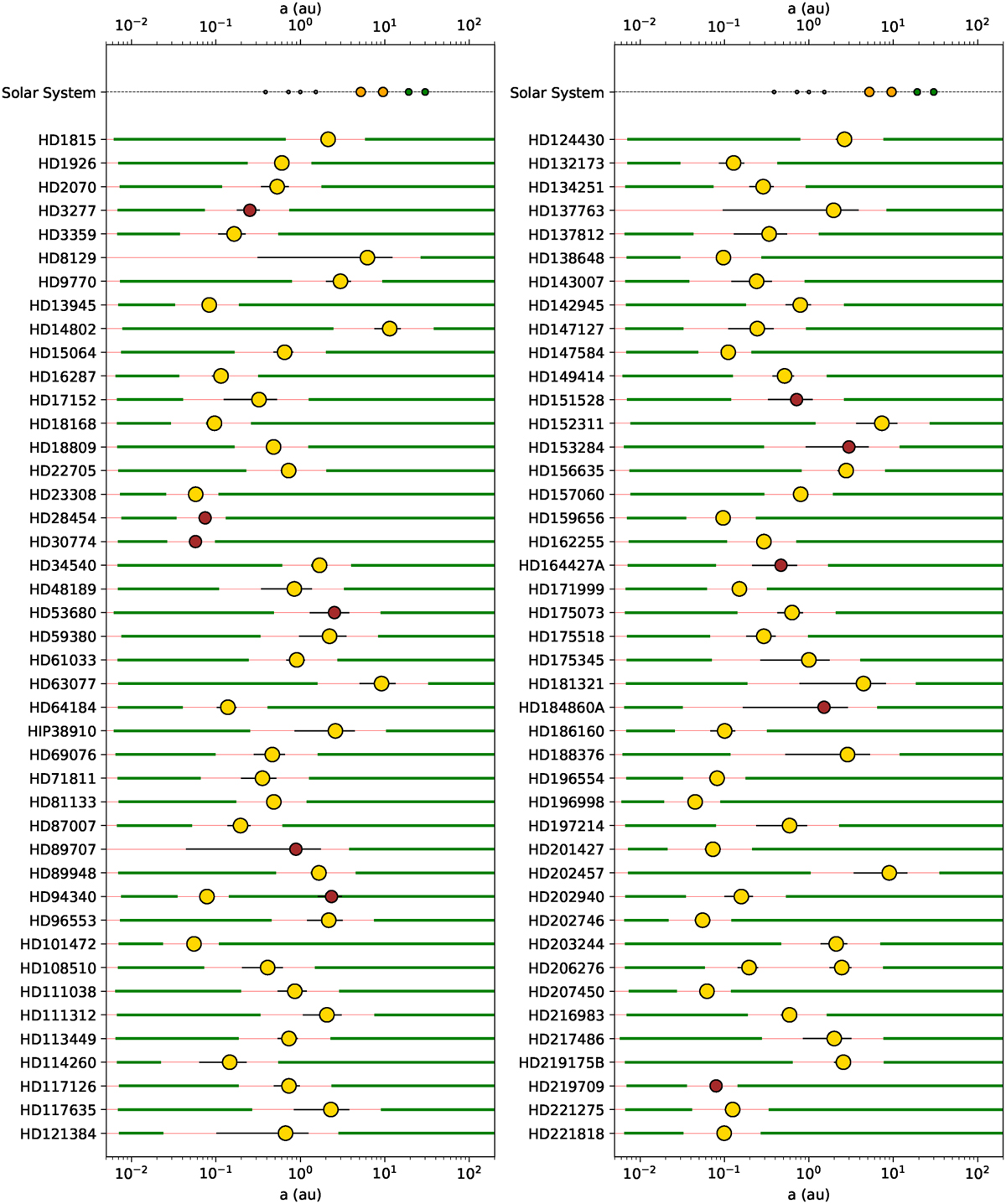Fig. 12

Download original image
Overview of the architectures of the 86 systems with only radial velocity solutions available, for which the dynamically stable and unstable regions for additional planetary companions are computed using the M sin i value of the detected companions, compared to that of the Solar System. For each system, the companion periastron and apoastron are connected by a thin black line, while the thick green and thin red lines highlight the stable and unstable regions for additional planetary companions, respectively, as detailed in Sect. 6.1; we note that circumbinary stable regions are typically smaller than the companion marker size due to the logarithmic axis used. The mass of each companion is represented by the marker growing size and different color, namely grey for terrestrial (M < 2 M⊕), green for Neptune-mass (10 M⊕ < M < 30 M⊕), orange for giant planets (30 M⊕ < M < 40 MJup), brown for brown dwarfs (40 MJup < M < 80 MJup), and yellow for stellar companions (M > 80 MJup).
Current usage metrics show cumulative count of Article Views (full-text article views including HTML views, PDF and ePub downloads, according to the available data) and Abstracts Views on Vision4Press platform.
Data correspond to usage on the plateform after 2015. The current usage metrics is available 48-96 hours after online publication and is updated daily on week days.
Initial download of the metrics may take a while.


